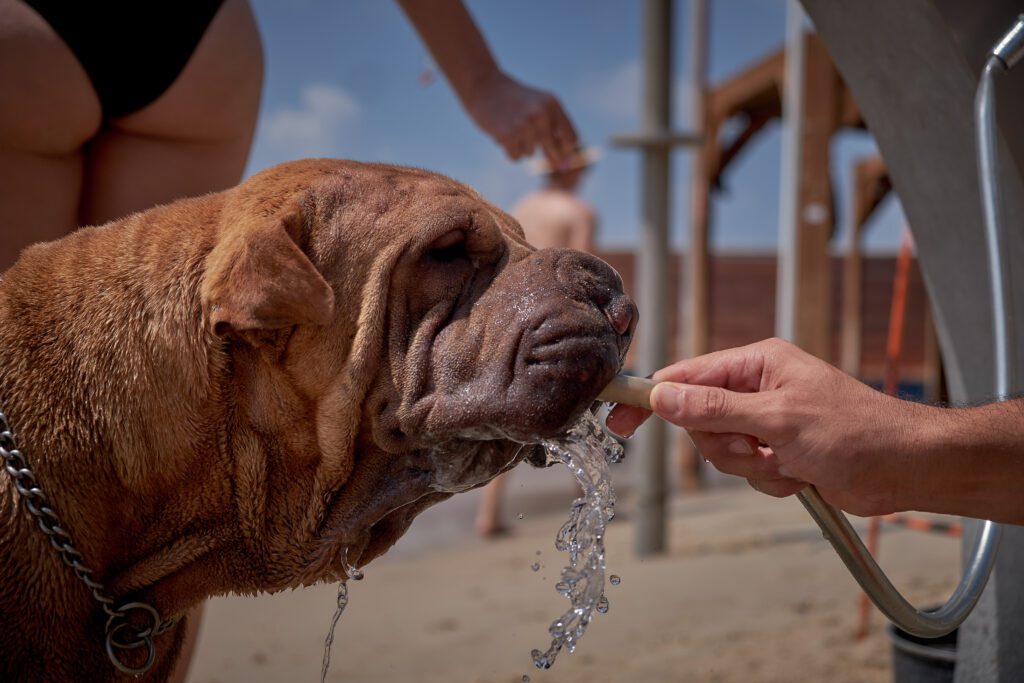Cushing’s Disease, also known as hyperadrenocorticism, is a condition that affects dogs and is caused by an overproduction of cortisol, a hormone that helps regulate the body’s response to stress. This disease can have serious health consequences for dogs if left untreated, which is why it is important for dog owners to understand the disease and its symptoms. By recognizing the signs of Cushing’s Disease and seeking veterinary care, dog owners can help ensure their pet receives the necessary treatment and support.
Key Takeaways
- Cushing’s Disease in dogs is a hormonal disorder caused by excessive cortisol production.
- Symptoms of Cushing’s Disease in dogs include increased thirst and urination, weight gain, and hair loss.
- Diagnosis of Cushing’s Disease in dogs involves blood tests, urine tests, and imaging studies.
- Treatment options for Cushing’s Disease in dogs include medication, surgery, and alternative therapies.
- Managing the side effects of Cushing’s Disease treatment in dogs is important for their overall well-being.
Understanding Cushing’s Disease in Dogs
Cushing’s Disease is a condition that occurs when the adrenal glands, which are located near the kidneys, produce too much cortisol. There are two types of Cushing’s Disease: pituitary-dependent and adrenal-dependent. Pituitary-dependent Cushing’s Disease is the most common form and occurs when there is a tumor in the pituitary gland, which stimulates the adrenal glands to produce excessive cortisol. Adrenal-dependent Cushing’s Disease occurs when there is a tumor in one or both of the adrenal glands themselves.
Cushing’s Disease can have a wide range of effects on dogs. Some of the most common symptoms include increased thirst and urination, weight gain, hair loss, and a pot-bellied appearance. Other symptoms may include increased appetite, panting, lethargy, muscle weakness, and skin infections. It is important for dog owners to be aware of these symptoms so they can seek veterinary care if they suspect their dog may have Cushing’s Disease.
Causes and Symptoms of Cushing’s Disease in Dogs
The exact cause of Cushing’s Disease in dogs is not fully understood, but there are several factors that can contribute to its development. One possible cause is a tumor in the pituitary gland or adrenal glands, which leads to an overproduction of cortisol. Other potential causes include prolonged use of corticosteroid medications, such as prednisone, and certain medical conditions, such as diabetes or obesity.
The symptoms of Cushing’s Disease in dogs can vary depending on the severity of the condition and the underlying cause. Some of the most common symptoms include increased thirst and urination, weight gain, hair loss, and a pot-bellied appearance. Other symptoms may include increased appetite, panting, lethargy, muscle weakness, and skin infections. It is important for dog owners to be aware of these symptoms so they can seek veterinary care if they suspect their dog may have Cushing’s Disease.
How to Diagnose Cushing’s Disease in Dogs
Diagnosing Cushing’s Disease in dogs can be challenging because the symptoms can be similar to those of other conditions. However, there are several diagnostic tests that can help determine if a dog has Cushing’s Disease. One common test is the low-dose dexamethasone suppression test, which involves administering a small amount of dexamethasone and measuring cortisol levels before and after. Another test is the ACTH stimulation test, which involves injecting a synthetic hormone called ACTH and measuring cortisol levels before and after.
Before undergoing diagnostic tests for Cushing’s Disease, it is important to prepare your dog by fasting them for a certain period of time. This is because certain medications or food can interfere with the accuracy of the test results. Your veterinarian will provide specific instructions on how to prepare your dog for the tests.
During the diagnostic process, your veterinarian will also perform a physical examination and may order additional tests, such as blood work or imaging studies, to rule out other potential causes of your dog’s symptoms. It is important to follow your veterinarian’s recommendations and ask any questions you may have about the diagnostic process.
Treatment Options for Cushing’s Disease in Dogs
There are several treatment options available for dogs with Cushing’s Disease, and the best option will depend on the underlying cause of the condition and the overall health of the dog. Some of the most common treatment options include medication, surgery, and radiation therapy.
Medication is often the first line of treatment for dogs with Cushing’s Disease. The most commonly prescribed medication is trilostane, which works by inhibiting the production of cortisol. Other medications that may be used include mitotane, which destroys the adrenal glands, and ketoconazole, which inhibits cortisol production.
Surgery may be recommended if a dog has a tumor in one or both of the adrenal glands. During surgery, the tumor is removed, which can help reduce cortisol production. However, surgery is not always an option, especially if the tumor is large or has spread to other parts of the body.
Radiation therapy may be used in cases where surgery is not possible or effective. This treatment involves using high-energy radiation to destroy cancer cells and reduce cortisol production. Radiation therapy is typically administered over several sessions and may be combined with medication to manage symptoms.
Medications Used to Manage Cushing’s Disease in Dogs
There are several medications that can be used to manage Cushing’s Disease in dogs. The most commonly prescribed medication is trilostane, which works by inhibiting the production of cortisol. Trilostane is typically given orally once or twice a day and must be taken for the rest of the dog’s life.
Another medication that may be used to manage Cushing’s Disease is mitotane, which destroys the adrenal glands. Mitotane is typically given orally for a period of time and then tapered off to a maintenance dose. It is important to closely monitor dogs on mitotane for any signs of adrenal insufficiency, as this can occur when the adrenal glands are destroyed.
Ketoconazole is another medication that may be used to manage Cushing’s Disease. It works by inhibiting cortisol production and is typically given orally once or twice a day. Ketoconazole can have side effects, so it is important to closely monitor dogs on this medication.
Alternative Therapies for Cushing’s Disease in Dogs
In addition to medication, there are several alternative therapies that may be used to manage Cushing’s Disease in dogs. Some of the most common alternative therapies include acupuncture, herbal medicine, and dietary supplements.
Acupuncture involves inserting thin needles into specific points on the body to stimulate healing and balance energy. This therapy can help reduce inflammation and improve overall well-being in dogs with Cushing’s Disease.
Herbal medicine involves using plant-based remedies to support the body’s natural healing processes. Some herbs that may be beneficial for dogs with Cushing’s Disease include milk thistle, dandelion root, and licorice root. It is important to consult with a veterinarian or holistic practitioner before using herbal remedies, as some herbs can interact with medications or have side effects.
Dietary supplements, such as omega-3 fatty acids and antioxidants, can also be beneficial for dogs with Cushing’s Disease. These supplements can help reduce inflammation and support overall health. It is important to choose high-quality supplements and follow the recommended dosage guidelines.
Managing the Side Effects of Cushing’s Disease Treatment in Dogs
Treatment for Cushing’s Disease in dogs can have side effects, and it is important for dog owners to be aware of these potential side effects and how to manage them. Some of the most common side effects of treatment include gastrointestinal upset, lethargy, and changes in appetite or water intake.
To manage gastrointestinal upset, it may be helpful to feed your dog smaller, more frequent meals and avoid foods that are high in fat or fiber. It is also important to provide plenty of fresh water and monitor your dog’s water intake, as excessive thirst can be a side effect of treatment.
Lethargy is another common side effect of treatment, and it is important to provide your dog with plenty of rest and a comfortable environment. If your dog is experiencing severe lethargy or seems unresponsive, it is important to contact your veterinarian.
Changes in appetite or water intake can also occur as a side effect of treatment. If your dog is not eating or drinking as usual, it may be helpful to offer them small, frequent meals and monitor their intake. It is important to contact your veterinarian if your dog’s appetite or water intake changes significantly or if they are not eating or drinking at all.
Prognosis and Life Expectancy for Dogs with Cushing’s Disease
The prognosis and life expectancy for dogs with Cushing’s Disease can vary depending on several factors, including the underlying cause of the condition, the severity of the symptoms, and the overall health of the dog. With appropriate treatment and management, many dogs with Cushing’s Disease can live a relatively normal life.
After treatment, it is important to monitor your dog’s health and well-being closely. This may involve regular check-ups with your veterinarian, blood work to monitor cortisol levels, and imaging studies to check for any signs of tumor recurrence. It is also important to continue any prescribed medications or alternative therapies as directed.
Preventing Cushing’s Disease in Dogs
While it may not be possible to prevent all cases of Cushing’s Disease in dogs, there are several steps dog owners can take to help reduce the risk. One of the most important steps is to maintain a healthy weight for your dog, as obesity has been linked to an increased risk of developing Cushing’s Disease.
Regular exercise is also important for maintaining a healthy weight and overall well-being. Aim for at least 30 minutes of moderate exercise each day, such as walking or playing fetch. Be sure to consult with your veterinarian before starting any new exercise program, especially if your dog has any underlying health conditions.
It is also important to provide a balanced diet that is appropriate for your dog’s age, breed, and activity level. Avoid feeding your dog excessive amounts of high-fat or high-sugar foods, as these can contribute to weight gain and other health problems.
Living with a Dog with Cushing’s Disease: Tips and Advice
Living with a dog with Cushing’s Disease can be challenging, but there are several tips and strategies that can help make the process easier. One of the most important things you can do is to establish a routine for your dog, including regular mealtimes, exercise, and medication administration. This can help reduce stress and provide a sense of stability for your dog.
It is also important to provide a comfortable and safe environment for your dog. This may involve providing soft bedding, a quiet space for rest, and plenty of fresh water. It may also be helpful to provide mental stimulation through puzzle toys or interactive games.
Supporting your dog’s overall health and well-being is also important. This may involve providing a balanced diet, regular exercise, and regular veterinary check-ups. It may also involve incorporating alternative therapies, such as acupuncture or herbal medicine, into your dog’s treatment plan.
Cushing’s Disease is a complex condition that can have serious health consequences for dogs if left untreated. By understanding the disease and its symptoms, dog owners can help ensure their pet receives the necessary treatment and support. It is important to seek veterinary care if you suspect your dog may have Cushing’s Disease, as early diagnosis and treatment can improve outcomes. By sharing this information with other dog owners, you can help raise awareness about Cushing’s Disease and promote the health and well-being of dogs everywhere.
If you’re interested in enhancing your dog’s socialization and mental stimulation, you might want to check out this article on A Pawsitive Approach to Enhancing Socialization and Mental Stimulation. It provides step-by-step guidance on how to create a positive and enriching environment for your furry friend.



